Rising from the ashes of a camp legacy that had long "gone West", Tim Burton's Batman took The Caped Crusader into very dark territory - shades of blue and grey were replaced by shadows and smoke. Surfer guitar music was swapped out for themes of pure gothic horror, this was to be like nothing seen before, this was a new Batman, a Batman awash with 80s cynicism, violent undertones and downright abominable people. Not a pun in sight, nor a whimsical sideways building climb. This Gotham was hundreds of feet tall and full to the brim with crime.
We are introduced to Batman as he dishes out punishment to some disparate muggers sharing out the spoils from their latest score. Interestingly this mugging has echoes of the same events that robbed Bruce Wayne of his parents, two adults and a child set upon in a back alley, only that this time it didn't end fatally. The way Batman is introduced here (aside from the strange cartoon version we see ever so briefly) is sublime. The slow drift down from space in the background with his wings aloft, while the music gently proclaims his arrival is wonderful film making. We are in on it and the bad guys have no idea what is about to happen. Eventually Batman sets upon these two unfortunates and strides towards them like a monster of horror. He ensures that he gets in at least two wing reveals, like some sort of Universal Dracula (which must have been what Burton was going for here) and then sets about dealing justice. After leaving one with broken ribs, he dangles the other off of a rooftop and makes sure he spreads the word about who he is. He is Batman, and within that one line the character is cemented, he then disappears into the night. As introductions go it is really very special and absolutely sticks in the memory.
This is no normal origin story, Batman is already suited up and reasonably well known among the criminals and police in Gotham. While not infamous yet, he is gaining a reputation. The origin story is slowly gathered throughout the film, which in hindsight is much appreciated, especially given that we are now surrounded with modern comic books films that are awash with tedious origin tales.
Burton met a lot of actors to play Batman. The studio wanted square jaws, muscles and action stars. Burton could only think about why Bruce Wayne would need to dress as a bat if he was a man-mountain. As far as Burton was concerned, the man behind the mask should be a normal guy outside of it. He wanted Keaton (and producer Jon Peters backed his choice) as he felt that he had a crazy look in his eye and would be someone who would need to create the look to make himself scarier. Fans were not happy when they found out about Tim Burton directing Batman. They were even less happy about Michael Keaton playing Batman. Taken from The Toronto Star in 1988:
"The caped crusader may turn out to be a wimp. Batman's fans at first were thrilled by reports that Warner Bros. would spend $30 million to make a new Batman movie, for release next summer. They're no longer thrilled. Warner has cavalierly ignored their advice to cast a serious macho type - Sylvester Stallone or Clint Eastwood, say- in the spectacular. Instead, director Tim Burton has given the part to Michael Keaton. Michael Keaton is no Sylvester Stallone.
Best known as a wacky prankster in Burton's 1988 comedy, Beetlejuice, Keaton has a receding hairline and a less-than-heroic chin. He stands an estimated 5 feet 10 inches tall, weighs in at 160 pounds or so, and "looks like a hundred guys you see on the street," says Beau Smith, a Batman fan in Ceredo, W. Va. "If you saw him in an alley wearing a bat suit, you would laugh, not run in fear. Batman should be 6-2, 235 pounds, your classically handsome guy with an imposing, scary image."
Hundreds of passionate and humourless protest letters have poured into the offices of publications that cater to comic-book fans and collectors. Many of the letter writers voice strong suspicion that Warner may pull a fast one, springing on an unwary public a cynical sendup rather than a celebration of Batman.
Warner Bros., a Warner Communications Inc. unit, is "after the money of all the people who only remember Batman as a buffoon with a twerp for a sidekick in the campy TV series from the '60s," says J. Alan Bolick, a real-estate appraiser in Suwanee, Ga. "Hollywood is just in it for the money, and Warner Bros. has been doing a bit of duplicity. I don't think Mr. Burton has any intention of making a serious Batman movie. But Batman has been part of everyone's childhood. He deserves a bit of respect. Fans have circulated petitions demanding a different cast, and they booed Warner representatives who had the audacity to show up at a comics-fan convention with a photograph of Keaton."
Warner Brothers received over 50,000 letters of complaint, so to appease the fans, Bob Kane was brought in as creative consultant.
As it turns out the fans couldn't have been more wrong. The casting of Keaton was actually a total masterstroke. His Bruce Wayne was charming, friendly, witty and charismatic, but there was a sheen of imbalance all over him, like at any minute he would do something odd, and as Batman he had those piercing blue eyes peering out from the black cowl, he also had the requisite distinctive mouth and chin the fans so obviously craved. Keaton would later say that the suit was the key to unlocking the whole thing. He walked into the project focussed on nailing the Bruce Wayne part, thinking that the Batman stuff will take care of itself. However wearing the suit became the way to get into Bruce Wayne's mind for Keaton. As a claustrophobic, Keaton found that inside the suit he felt panicked, alone and scared. Between shoots, so cumbersome was the suit that Keaton was placed on a leaning board, it was during these times that Keaton began to have panic attacks. "I drank a lot of coffee, I eat a lot of vitamins and a lot of water, but I couldn't do any of that because I couldn't get out of the suit to go to the bathroom, so inside (the suit) I started having panic attacks and I thought 'I don't know how to do this, man, I'm feeling really, really scared' and then it hit me. This is perfect, this is design for this really unusual dude. This Bruce Wayne guy, the guy who has this other personality that is really dark and really alone and really depressed. I just took all that stuff the suit was giving me".
But the moaning of the fans didn't stop with Keaton. They were also unhappy with the casting of Jack Nicholson as The Joker. From the same article, "A few fans also dislike the casting of Jack Nicholson as the Joker, a pathologically evil Batman archenemy. Mr. Nicholson, it seems, is guilty of having a sense of humour. "How can you have Jack Nicholson playing a villain and not have him be funny," says David McDonnell, editor of Starlog magazine, a monthly devoted to science-fiction media. It would seem that even before the internet, there was no pleasing some people.
Nicholson was another brilliant piece of casting and he had been producer Michael Uslan's (and Bob Kane's) choice since 1980. In fact Ulsan had sketched over an ad for The Shining in a paper to picture Nicholson in the role.
Producer Jon Peters approached Nicholson as far back as 1986, during filming of The Witches of Eastwick. Nicholson accepted the role and had what was known as an "off-the-clock" agreement. His contract specified the number of hours he was entitled to have off each day, from the time he left the set to the time he reported back for filming, as well as being off for Los Angeles Lakers home games. Nicholson demanded to have all of his scenes shot in a three-week block, but the schedule lapsed into 106 days. He received a $6 million salary, as well as a large percentage of the box office gross estimated between $60 to $90 million. Not bad, no wonder he is s0 happy to talk about the film (wearing a badge too).
Burton is on record with how grateful he was to Jack Nicholson during the entire project. Very much like Brando in Superman: The Movie, the casting of Nicholson as The Joker was a move that got the wheels in motion for the whole project. Burton also says that Nicholson was very supportive throughout and offered lots of help to the young director, "The casting of Jack as the Joker, I don't even think there was necessarily a conversation, he IS The Joker. He was everybody's first choice. That was about as clear as it ever got. In fact there was even a worry he was too perfect for it. You expect Jack to be The Joker, but for me he goes beyond that, he is so amazing that way. He was the godfather of this movie for me in the sense he was really supportive. Once he was in it gave the project an energy that is hard to describe. It's the first time I met an actor like that - you see what someone like that does for the crew and me and for everybody, with the energy levels. You see people's pace get picked up - it's amazing to watch”. Nicholson also asked that his old pal Tracy Walter be cast as Bob the Goon, "Tim came to me and said is there anyone you would like to have in this Bob part? It can be a friend or anyone. With Tracy if I could cast anyone, that's who I would cast. I'm not giving my job to anyone in my life if they're not really good at it. As well as being a friend in life, it's a brilliant actor. So perfect for this".
A last minute casting choice was Kim Basinger as Vicki Vale, Sean Young was originally cast but famously fell off her horse while rehearsing for a scene that was eventually cut from the script. As an admirer of Hammer films of the past, Burton turned to Michael Gough for the role of Alfred.
Pinewood was overtaken, and I mean overtaken by Batman. Eighteen sound stages were used - almost the entire 95 acre backlot, and this really was the last of the old fashioned steam trains in terms of set building. This thing was a titanic. Designed by Anton Furst (Company of Wolves, High Spirits) to be the worst city on earth. Furst and the art department deliberately mixed clashing architectural styles to "make Gotham City the ugliest and bleakest metropolis imaginable". Furst continued, "we imagined what New York City might have become without a planning commission. A city run by crime, with a riot of architectural styles. An essay in ugliness. As if hell erupted through the pavement and kept on going". The 1985 film Brazil by Terry Gilliam was also a notable influence upon the film's production design, as both Burton and Furst studied it as a reference.
Shooting Batman was no picnic, the script was forever being changed and worked on as the camera was rolling. While credited to Sam Hamm, Hamm was not allowed to perform rewrites during the 1988 Writers Guild of America strike. Jonathan Gems, Warren Skaaren and Charles McKeown rewrote the script during filming. Hamm criticized the rewrites, but blamed the changes on Warner Bros. Burton explained, "I don't understand why that became such a problem. We started out with a script that everyone liked, although we recognized it needed a little work." Originally in the climax, the Joker was to kill Vicki Vale, sending Batman into a vengeful fury. Jon Peters reworked the climax without telling Burton and commissioned production designer Anton Furst to create a 38-foot (12 m) model of the cathedral. This cost $100,000 when the film was already well over budget. Burton disliked the idea, having no clue how the scene would end: "Here were Jack Nicholson and Kim Basinger walking up this cathedral, and halfway up Jack turns around and says, 'Why am I walking up all these stairs? Where am I going?' I had to tell him that I didn't know."
As with Burton's previous film, Beetlejuice, Batman is packed full of social commentary focussing on greed and vanity. In much the same way Terry Southern examined with The Magic Christian twenty years before, the climax of Batman also explored what people would do for some free money, and the Joker exploited the fears of the public at large in appearing without make up or hygiene products. Nightmarish ideas for a world exiting the ultra-cosmettically obsessed 1980s.
Batman was ultimately a war won with hype and merchandising. 1989 was a fierce battle field. There was to be a new Indiana Jones film, a new Back to the Future, Star Trek, Ghostbusters and also James Bond. To win this war you had to be canny and know your onions. Luckily for Warner Bros. They had Jon Peters. Many out there will point at Peters and laugh at his bad choices, but the man is a serious player when it comes to movie tie ins. He basically invented the concept when he began to tie albums of pop music to movies (Flashdance, A Star is Born) he was working on. He did the same with Batman by signing Prince to make an exclusive Bat-based album (he also insisted that Elfman's score be released separately as he felt it was THAT Good) and tied the film with every possible merchandising opportunity imaginable. "Batmania" was born and he was everywhere that year - board games, toys, quilt covers, trading cards, drinks, snacks, T shirts, comics, lunch boxes - everywhere. In fact over $750 million worth of merchandising was sold that summer, which is a staggering figure.
Production designer Anton Furst designed the poster, which he called "evocative but ubiquitous. Only featuring the Bat-Symbol. Not too much and not too little". This was an absolute stroke of genius as it added an odd sense of mystery to the entire project and I still get tingles when I see that poster.
Along with the giant performances, budgets and sets, the soundtrack is also something to behold. In fact aside from Williams' Superman score, there is no superhero soundtrack that has ever bettered Elfman's opus. It is quite simply breathtaking, each scene is tempered by this creeping menacing score, that one minute feeds you a waltz and then the next is stabbing you with pipe organs. It is just so very, very good.
Batman opened on June 23, 1989, grossing $43.6 million in 2,194 theatres during its opening weekend. This broke the opening weekend record, set by Ghostbusters II one week earlier, with $29.4 million. Batman would eventually gross $251.2 million in North America and $160.15 million internationally, totalling $411.35 million. It was the first film to earn $100 million in its first ten days of release, and was the highest grossing film based on a DC comic book until 2008's The Dark Knight. The film's gross is the 66th highest ever in North American ranks. Although Indiana Jones and the Last Crusade made the most money worldwide in 1989, Batman was able to beat The Last Crusade in North America, and made a further $150 million in home video sales.
Twenty-five years later the film may not quite have the same impact and slightly buckles under the strain of limited technology and what has since followed it, but it is still a perfect capsule and it really did change a lot of things. Without Burton's vision the rusted wheels of superhero films would never have got going again and Batman would only be remembered as a man in a spandex suit, making puns while walking up a wall to surfer-guitar. Each and every superhero film that followed it attempted to recreate the magic but never quite achieved the same trick. Dick Tracy the following year attempted to walk the same line (including the evocative logo poster) but it went too far in one direction and fell over its own feet.
This was lightning in a bottle and something that was incredible to witness coming to pass.
Happy 35 years, Batman.




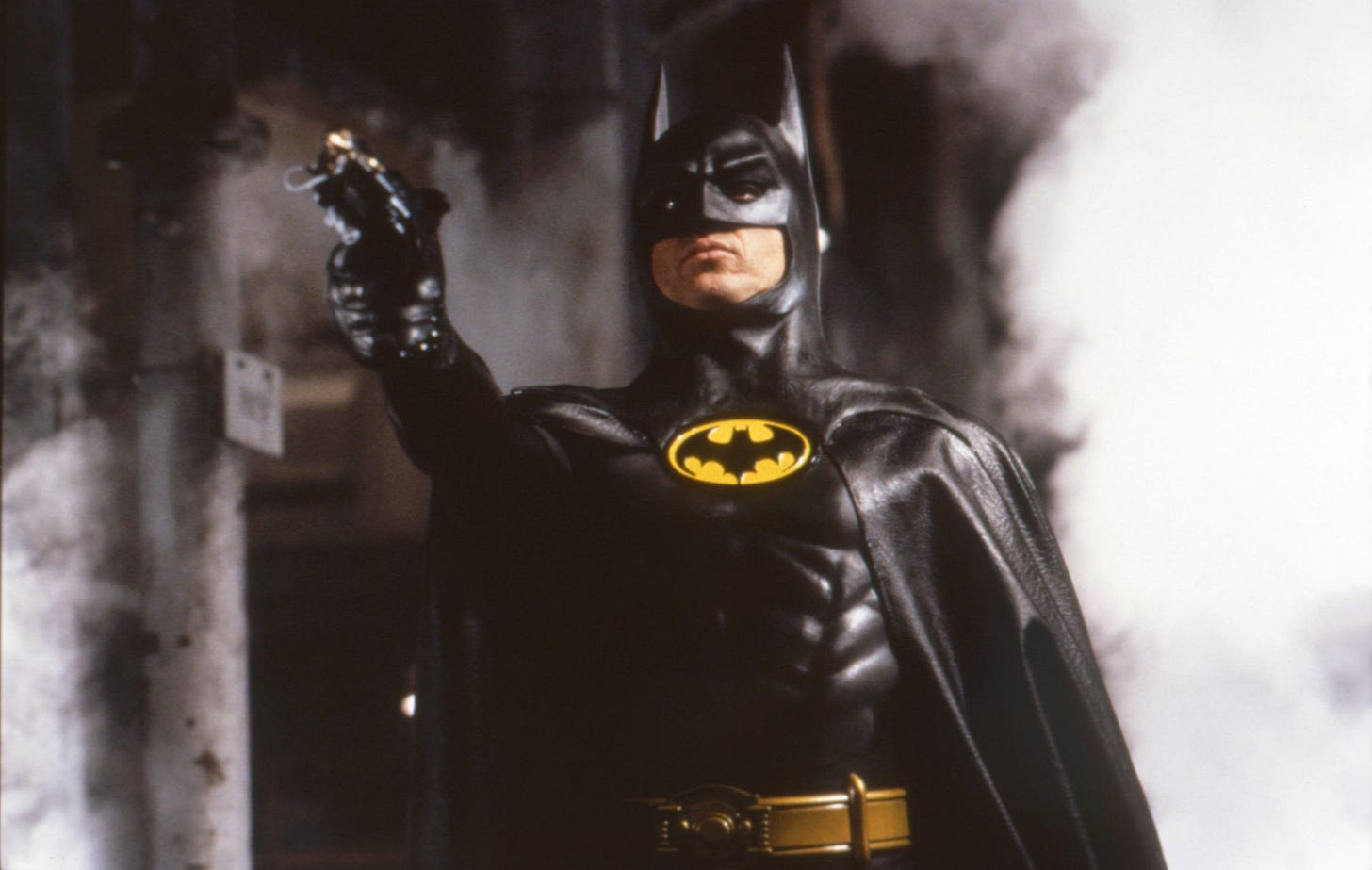
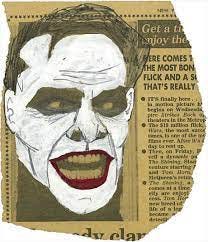
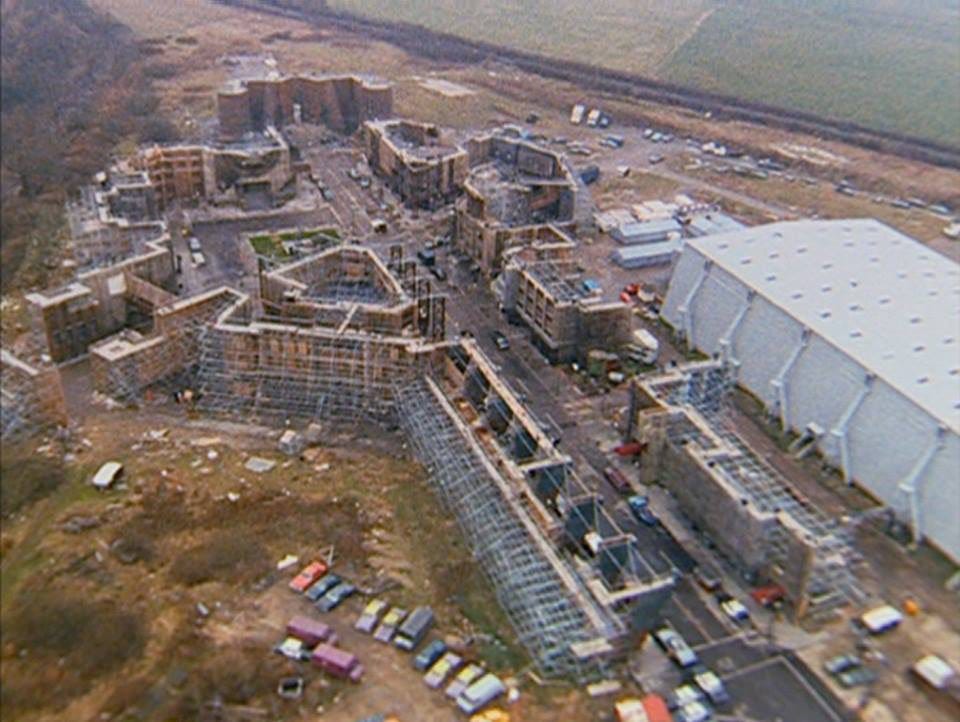
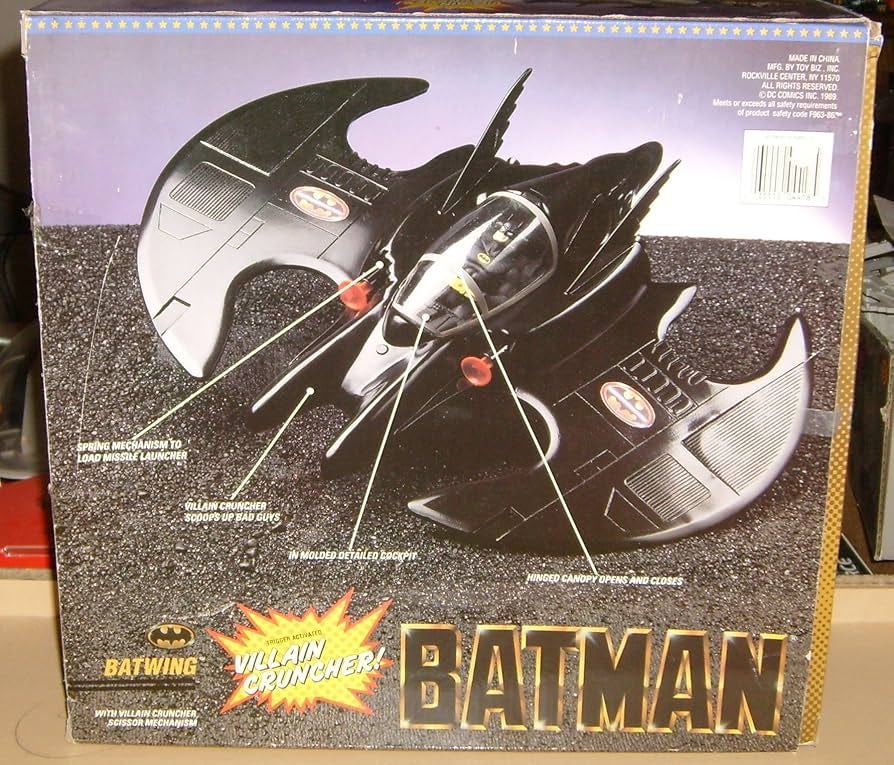
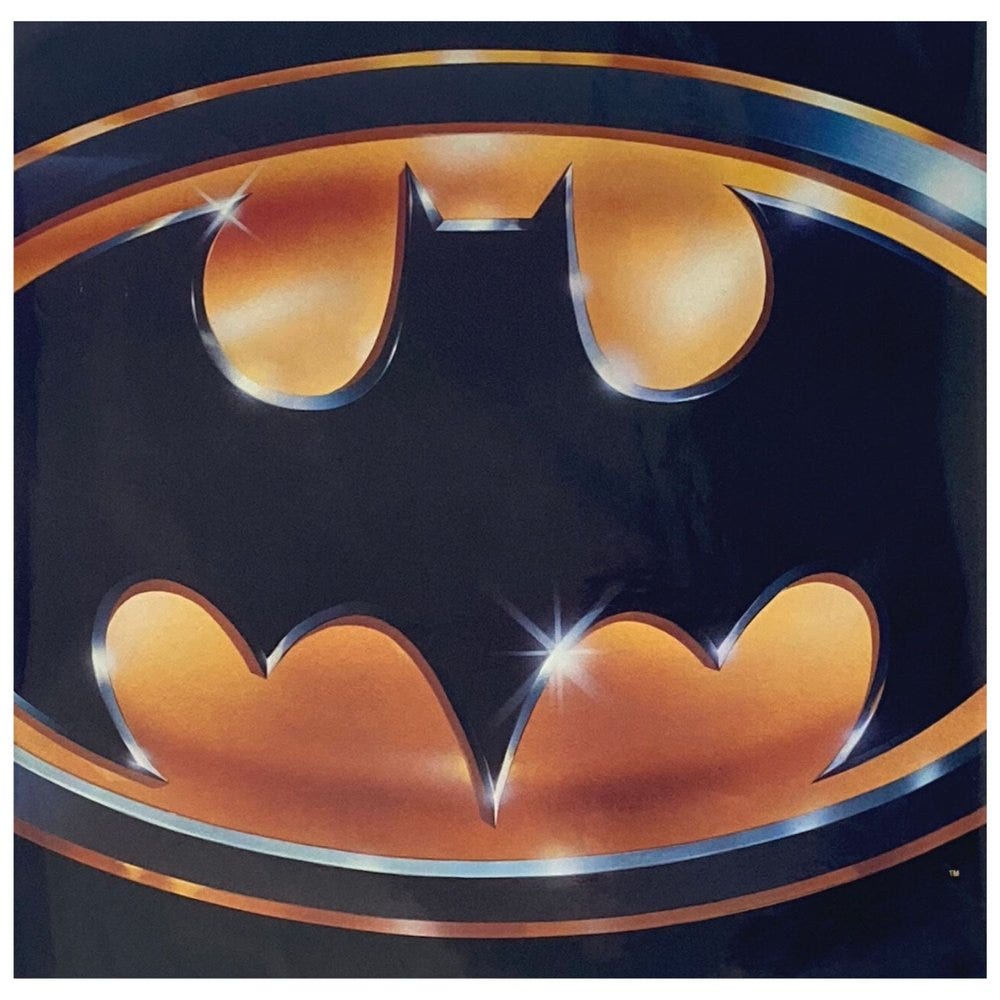
Off topic, but seriously John, All Rather Mysterious is one of the best pods ever. Any chance of that being resurrected?
Proof positive that capitulating to the demands of fandom is a bad idea - see The Rise of Skywalker for contrast. Incidentally, the quoted fan Beau Smith from West Virginia was/is a comics writer (assuming it's not a coincidence) and his work doesn't inspire.